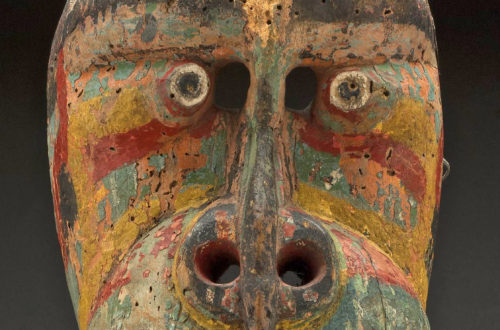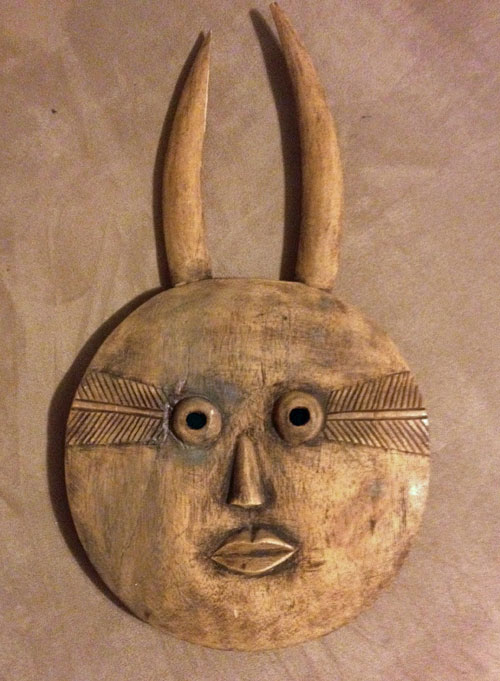 Q: Here’s an interesting Balinese mask I picked up recently. I don’t know which character it represents since there are several simian characters in Balinese topeng, but I thought the pompadour was unusual, and it’s very well-carved. The ears are separate pieces lashed on with twine. Dan, 1589
Q: Here’s an interesting Balinese mask I picked up recently. I don’t know which character it represents since there are several simian characters in Balinese topeng, but I thought the pompadour was unusual, and it’s very well-carved. The ears are separate pieces lashed on with twine. Dan, 1589
A: I agree. It is well designed, carefully made, and not something you see very often. Sorry, I can’t tell which simian characters it represents. The Mask Man isn’t an expert on everything!
I’ll bet you only paid a modest price for it. I want our readers to realize that high quality reproductions are available, and they look just as good on the wall as an expensive artifact.
Here is some more info from Ubud. Mask-making is one of the oldest art-forms in the world. In Bali, masks (topeng or tapel) have been used for centuries in the performance of sacred theatre and dance, to tell epic Hindu tales of the battle between good and evil. They’re also used to ward off evil spirits, disease and natural disasters, and to celebrate the life-cycles, seasons and harvests.
Masks are most commonly used in the Balinese Topeng and Barong dances. An enormous range of masks can be found all over Indonesia, where they’re still commonly used for funerals, ceremonies, dances and exorcisms.
Mask-making techniques are passed down from father to son, and as many as 30 different instruments are used to carve them. The masks are made from wood and brightly painted and decorated with hair, teeth, goat-skin and sometimes gemstones, depending on their role and purpose. They can take the form of gods, demons with fangs and bulging eyes, or animals (most commonly pigs, buffalo and lions) and are either in the shape of a full-face or half-face. B







One Comment
Bob Ibold
Dan just sent this to me…
You’re welcome Bob, and yes the mask was very inexpensive – $23.00